In My Top 10 Television Characters, various members of Autostraddle’s TV Team will be telling you about the TV characters nearest and dearest to our hearts, EVEN the ones that aren’t lesbian/ bisexual / or queer. Today, the TV Team’s resident bisexual, Natalie, shares her Top 10.
I didn’t realize until after I submitted my television Top 10 last month that they were all united by one common thread — all the shows had ended their runs — and that is a thread that continues here. I suppose I’m drawn to seeing a fully formed story: of being able to judge a show by how it started and finished.
I’m not sure what it says about me — or, more precisely perhaps, what it says about television — that this list isn’t full of characters that feel like representations of me or the people that I’m drawn to in real life. But what’s truest about me is that the thing I love most is incisive writing. I love complicated, well-drawn characters, particularly those that end up in a space that, perhaps, you never could’ve imagined at the outset but that feels wholly authentic to the person we’ve gotten to know.
10. Peggy Olson, Mad Men
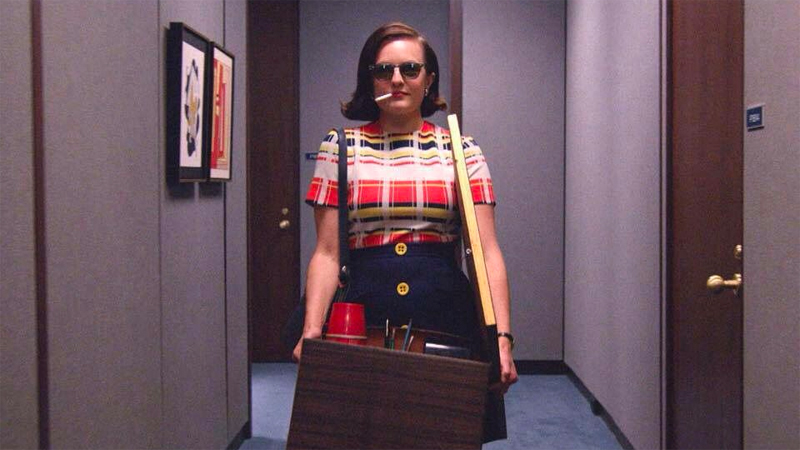
There’s a great scene in the third season of Mad Men — one of my favorite moments of the entire series, actually — when Peggy Olson stumbles out of a weed smoke filled room and heads back to her office. She’s brimming with confidence but her secretary, Olive, is worried. Olive’s older… she’s from a generation that didn’t dare dream of the life that Peggy’s achieved — a woman writing copy for Sterling-Cooper, with her own office and secretary — and she’s so invested in seeing Peggy go further.
“Oh, my God. You’re scared,” Peggy tells her, after realizing the source of her secretary’s scorn. She crouches down beside Olive and reassures her, “Don’t worry about me. I am going to get to do everything you want for me.”
The moment underscores the transformation that Peggy’s undergone and the transformation that still awaits… and, of everything that happens on Mad Men, Peggy’s character development is, by far, the most interesting part.
9. Mary Charles “M-Chuck” Calloway, Survivor’s Remorse

There’s something beautifully subversive about Survivor’s Remorse. The show took the stereotypes we traditionally ascribe to basketball players — loud, braggadocious, promiscuous — and gave them to the basketball player’s lesbian sister, Mary Charles (M-Chuck). She’s brash and unapologetic in a way that television rarely allows lesbians to be and I love M-Chuck for it. The brainchild of Mike O’Malley — better known, perhaps, as Burt Hummel — M-Chuck feels like a kindred spirit to Santana Lopez: one a lesbian from Dorcester, the other a lesbian from Lima Heights Adajacent… neither of them willing to take anyone’s shit.
Nothing makes me laugh quite as hard as M-Chuck’s hijinks on Survivor’s Remorse — her trip to church still makes me break out in riotous laughter, no matter how many times I’ve seen it — but, in season three, the show goes beyond the hilarity and deepens M-Chuck’s character in a really profound way. I’ll always wish that this show had gone on for a few more seasons, at least, to see the person M-Chuck grew into… but even still, M-Chuck’s character arc was surprising and gratifying.
8. Petra Solano, Jane the Virgin
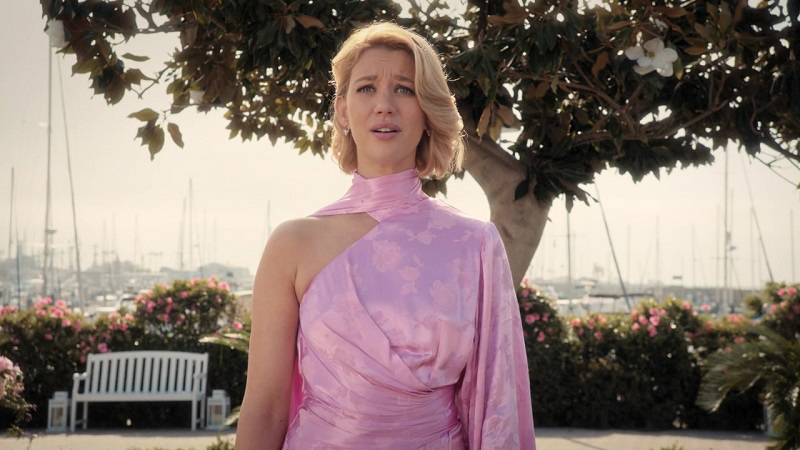
When we met Jane Gloriana Villanueva the first time, her passions included her family, God, grilled cheese sandwiches and writing…. and then, 99 episodes later, when we say goodbye to Jane Gloriana Villanueva for the last time, her passions included her family, God, grilled cheese sandwiches, writing and Rafael Solano. Things have happened, lives have shifted, but, essentially, the Jane that we meet at the beginning of Jane the Virgin and the Jane that we meet at the end aren’t that different from each other. Petra Solano though? The Petra Solano that ends JTV, with her girlfriend clinging to her side and her twin daughters smiling brightly nearby? She couldn’t be any more different that the Petra Solano we first met.
As I mentioned back in August, Petra is who she is in Season One because her mother made her that way. Magda taught her the way of the grift and that all relationships, including the one between mother and child, were transactional.
“I’ve had to lie my whole life and manipulate, and cheat, just to survive my crazy mother, and my psychotic sister, and my violent ex-husband. And, yes, those things made me who I am,” Petra admits to Jane “JR” Ramos early in Season Five. “But I can tell you this: I have changed a lot…and I’m going to change more.”
The impetus behind all that change? The other Jane. It wasn’t until she fell in with the Villanuevas that Petra had a model for what healthy relationships — between friends, between mother and child, between family — look like. Once she develops trust in those relationships, she’s able to believe in real love… and that’s when she finds JR.
Sorry, Rose, but the character development that turned an ice queen to a warm and loving mother and girlfriend might be the greatest love story Jane the Virgin ever told.
7. Olivia Pope, Scandal
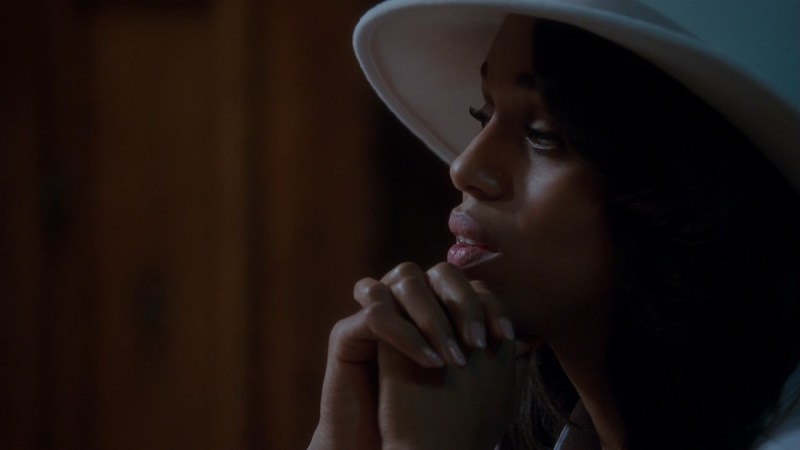
Everyone knows that aphorism, “power tends to corrupt, and absolute power corrupts absolutely,” but the rest of the quote, which is often forgotten, is “great men are almost always bad men.” We’ve seen that great men be bad on television more often than I can count, Scandal proved to us that the same could be true of great women too.
Olivia Pope is a bad person but she doesn’t start out that way. When Olivia’s right-hand man, Harrison, extends a job offer to Quinn in the show’s first episode, he makes that clear: “We all get paid crap salaries because we’re the good guys…[This is] the best job you’ll ever have. You’ll change lives, slay dragons, love the hunt more than you ever dreamed because Olivia Pope is as amazing as they say.” The Olivia Pope we meet in the first season is good but she — because she is a woman, because she is a black woman — has to be great.
But the closer Olivia Pope draws to greatness, the more her view of what defines it changes. Can you truly be great if your work is subject to the whims and messes of the world’s most powerful people? Olivia’s descent is fueled by the belief that it is not. True greatness can only be achieved with power and Olivia clamors for that until it’s hers. But power tends to corrupt and absolute power corrupts absolutely… and Olivia Pope is no exception… and that descent into absolute corruption makes Scandal worth watching.
6. Emma Hernandez, VIDA
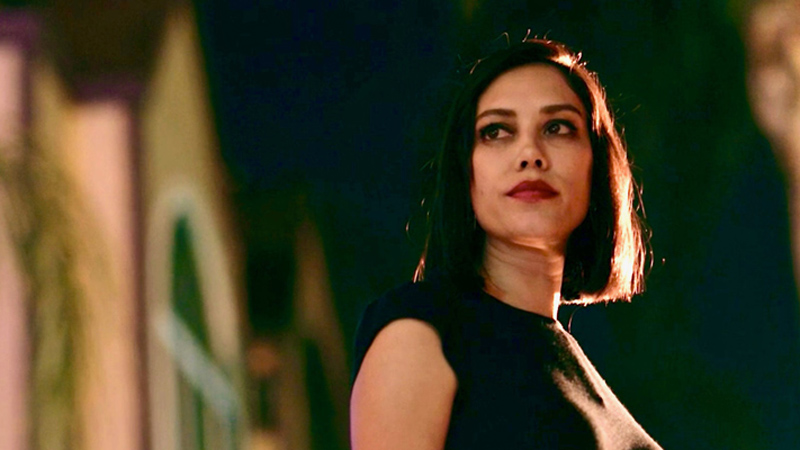
Vida‘s series finale is filled with moments that you couldn’t have imagined when Lyn and Emma Hernandez first return to their Boyle Heights neighborhood to say goodbye to their mother. I remain in awe of how much character development Tanya Saracho packed into so few episodes and am remiss that she wasn’t afforded more.
For me, the moment that strikes the deepest happens when Emma walks into her father’s church to confront him over his claim against the building. The fact that Emma’s there at all — in her father’s church, in East LA, at all — seems improbable but when called to defend what’s hers, Emma blows past her boundaries and fights for the bar she finally recognizes as her legacy. Her father defends his actions as a reaction against the hedonism he’d witness there…”the perverted spirit of homosexuality that [Emma’s] mother left,” he says.
“Oh, not just my mother, Victor…Your daughter, la hija del pastor, is a queer,” Emma announces to the entire church. “Que soy marimacha. Que soy marimacha.”
It’s such a profound moment but one that almost gets lost in the chaos that follows. Emma came back to Boyle Heights certain of who she was, though still intensely private about it — even Eddy doesn’t know until the show’s final season — but she still carries the shame her mother heaped on her. It feels like every step we’ve taken with Emma… from when she sees Cruz again to the confrontation by Cruz’s friends at the Vaquero wedding to hook-up with Baco to her relationship with Nico… has led us to this moment where Emma can proclaim her queerness (and, by extension, defend the queerness on display at the bar) unapologetically. Finally, she understands that the shame is not hers, it is theirs.
“You are your mother’s daughter,” Victor spits, after Emma threatens to expose his abusive history.
“Yes, I am,” Emma answers…almost proudly.
5. Kalinda Sharma, The Good Wife
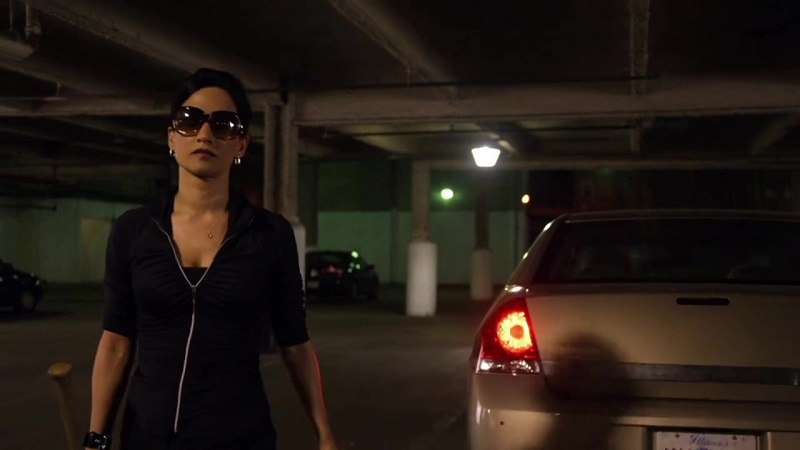
Sometime before The Good Wife‘s story begins, Leela Tahiri puts on her armor — leather jackets and knee-high boots, most often — and becomes Kalinda Sharma. With that, the truth becomes more malleable, relationships become transactional and the only allegiance Kalinda has is to herself. The mistakes of her tumultuous marriage — whatever they were, I never quite understood what went on there — won’t be repeated so Kalinda Sharma tries to make herself impenetrable.
It doesn’t work.
It doesn’t work in the moments when Kalinda bends over backwards to secure Alicia’s spot at Lockhart-Gardner or when she commits a felony to get Cary out of prison or when she breaks down after identifying her best friend’s lifeless body. She’s never as impenetrable as she wants to be. She cares, despite herself.
I hate the way Kalinda’s arc on The Good Wife ended — I’m not sure that I’ll ever forgive Robert and Michelle King for squandering Archie Panjabi’s talents — but, nonetheless, it gave the show the highest of its highs. Watching Kalinda become the person she never wanted to be is the best part of The Good Wife.
4. Jesse Pinkman, Breaking Bad
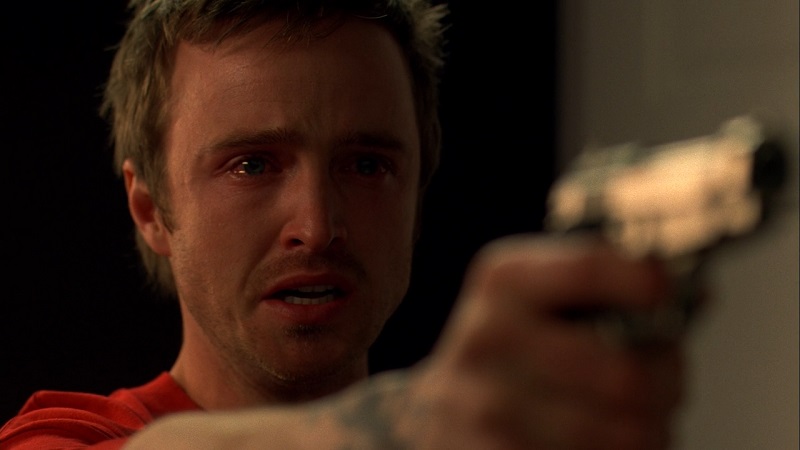
Jesse Pinkman wasn’t supposed to live past the first season of Breaking Bad. He was the drop-out and small-time drug cook/dealer who was going to introduce Walter White to the drug trade and then, in the season finale, he’d be a casualty to Walt’s increasing sociopathy. But the writers’ strike curtailed the production of the show’s first season and, in the interim, the show’s creator reconsidered. Jesse would live onto be Breaking Bad‘s most compelling character and the antithesis to the monster Walter White becomes.
There is always good in Jesse — deep down, inside, he’s still that kid who wants so desperately for his parents to love him — and that’s what separates him from Walt, in my book. Walt feigns indifference until it becomes actual indifference but Jesse carries the weight of all the horror Heisenberg wrought. Twice, Jesse’s called on to kill someone else: the first time, he flinches, nearly getting himself killed, and the second time, the tears in his eyes threaten to spill onto his cheeks. The bad swirls around him but the good in Jesse is always right there… in his effort to save an abuse child from his meth head parents, in his love for Jane, in his persistent fight for Andrea and Brock… and you never feel like he’s irredeemable.
3. Gustavo “Gus” Fring, Breaking Bad
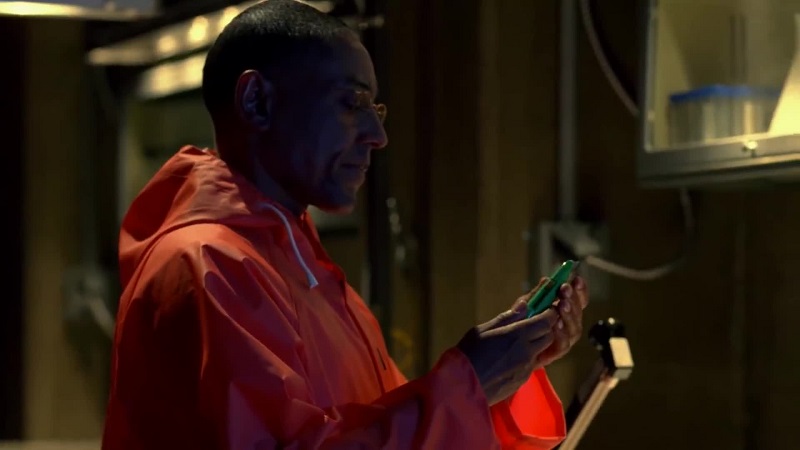
Gus Fring is, perhaps, the exception to my “good character arc” rule: he maintains his impenetrable facade throughout his run on Breaking Bad. Still, though, he’s utterly compelling, particularly with how he slips from pure sophistication in one moment, to absolute villainy in another, in the blink of an eye… like in “Box Cutter” where he changes from mild mannered businessman to unrepentant murderer and back, without saying a word.
Breaking Bad hints that there’s more to Gustavo Fring — that he wasn’t always this impenetrable force — but the only time you get to see that is in his pursuit of revenge for the death of his one-time partner, Victor. His thirst for vengeance and, particularly, his need to torture Hector Salamanca, contradict Gus’ usual risk-adverse nature. Those deviations are what ultimately leads to his downfall.
2. Annalise Keating, How to Get Away With Murder
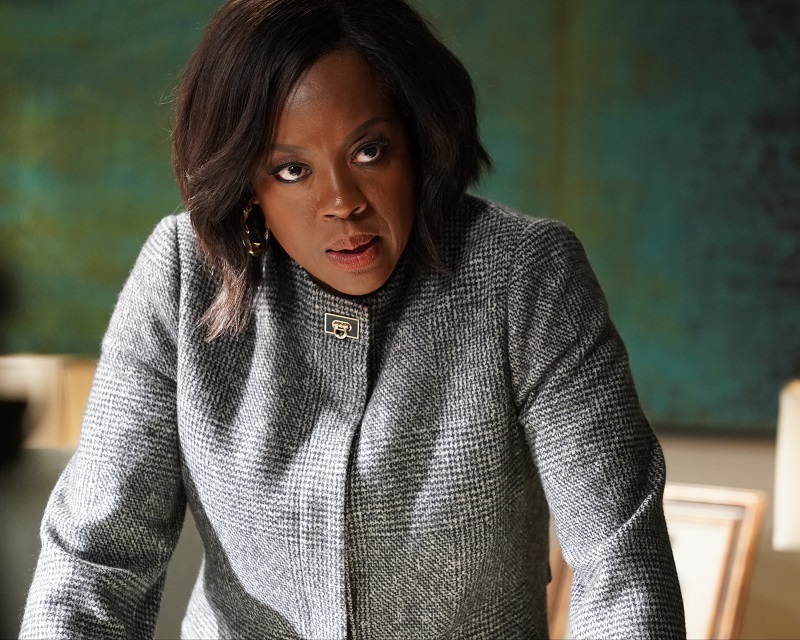
In her final closing argument, Annalise Keating takes off the mask that she’s been wearing from the moment we met her. Over the years, the mask has slipped, revealing in short bursts how Anna Mae Harkness became Annalise Keating, but it’s not until the finale that she makes it plain for everyone. She admits to the awful things she’s done and the path that brought her there: the racial taunts she faced as a child, the sexual abuse she survived at 11, the internalized homophobia that kept her from committing to her first love, the loss of her son, the murder of her husband, the alcoholism, the depression, the grief.
“Who I am is a 53-year-old woman from Memphis, Tennessee, named Anna Mae Harkness,” she admits. “I’m ambitious, black, bisexual, angry, sad, strong, sensitive, scared, fierce, talented, exhausted.”
It’s hard imaging the Annalise we meet in Season One revealing these truths about herself; death might have been preferable. But in between all the OMFG moments that made HTGAWM the rollercoaster ride that it was, Annalise Keating grew… and became a better version of herself… and with Viola Davis steering the portrayal, it was enthralling to watch.
1. Omar Little, The Wire
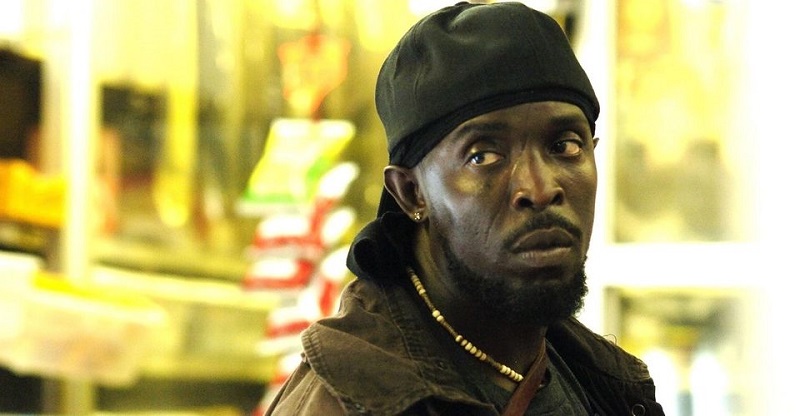
Midway through The Wire‘s second season, Omar Little is called the stand as the prosecution’s star witness in the murder trial of Marquis “Bird” Hilton. It’s one of the best scenes in the entire series…. one that, if you’d been ambivalent about Omar until then, cements you as a lifelong fan. It showcases the thing I love most about Omar: the rich duality of his character.
Omar strolls into the courtroom looking clean: fresh braid, crisp, new black and red outfit with a matching Hawaiian Warriors varsity jacket and — per the prosecutor’s instructions — a haphazardly worn tie. He taunts his rivals as he makes his way to the stand, unafraid to let them know that he’s behind their downfall. He gets on the stand and, for the most part, tells the absolute truth. He’s candid and charming, in a way that completely disarms the jury. He’s an unrepentant gangster who accepts his role in the game — in stark contrast to the defense attorney who justifies his complicity — but he’s restrained by a moral code.
The only thing? Omar’s entire reason for being in court that day is a lie. He’s testifying to a murder her never saw, not for a sweetheart deal from the prosecutor but to avenge the death of his boyfriend, Brandon, who died viciously at Bird’s hands. But none of it matters, really, because by the time he steps off the stand, everyone in the courtroom believes the most honest guy in the room is a gangster who spends his days robbing ‘hoods.
Honorable Mentions: Amy Gardner, The West Wing; Arabella Essiedu, I May Destroy You; Blanca Evangelista, Pose; CJ Cregg, The West Wing; Jessica Pearson, Suits; Penelope Alvarez, One Day at a Time and Tegan Price, HTGAWM.
Where to stream gay TV:
89 Queer TV Shows to Stream on Netflix
32 Lesbian, Queer & Bisexual (LGBTQ+) TV Shows Streaming Free on Amazon Prime
62 TV Shows On Hulu with LGBTQ+ Characters



i had to look up that Lord Acton quote, and oh my god – how did i never know this? tysm!
Love this <3
natalie this is perfect we see EYE 2 EYE